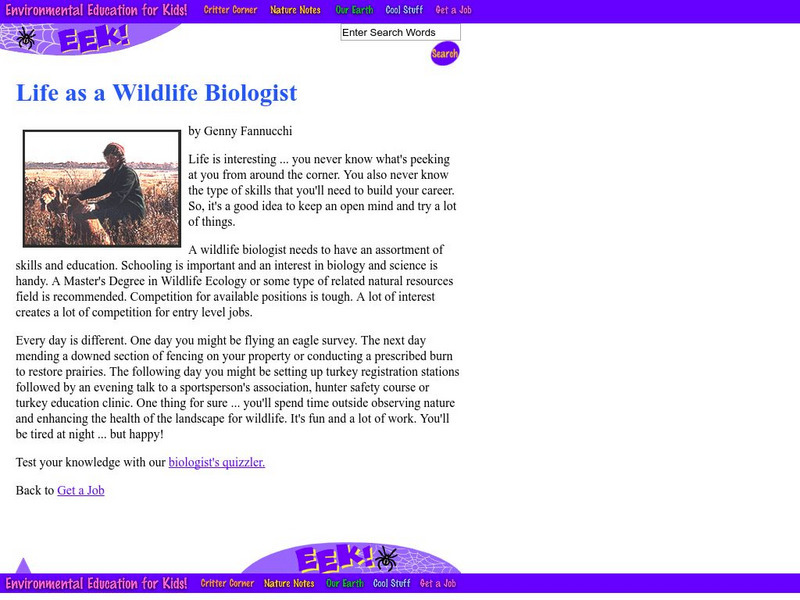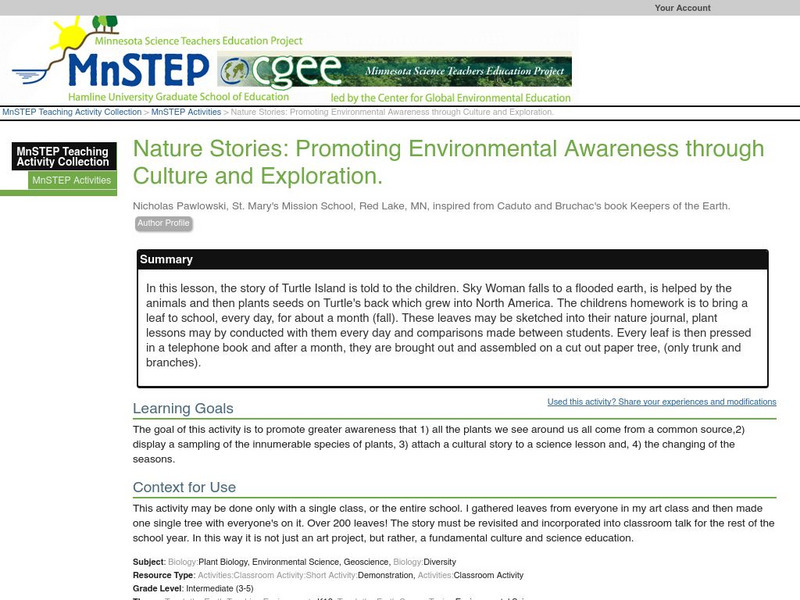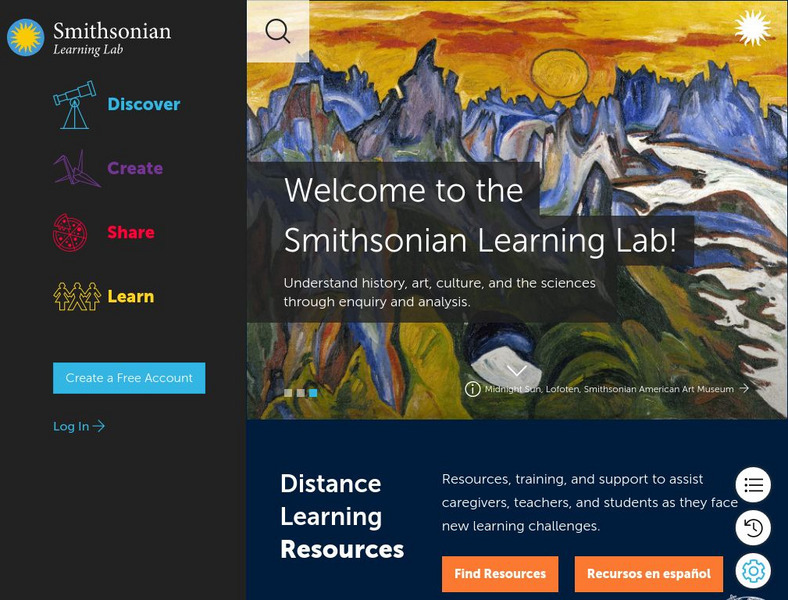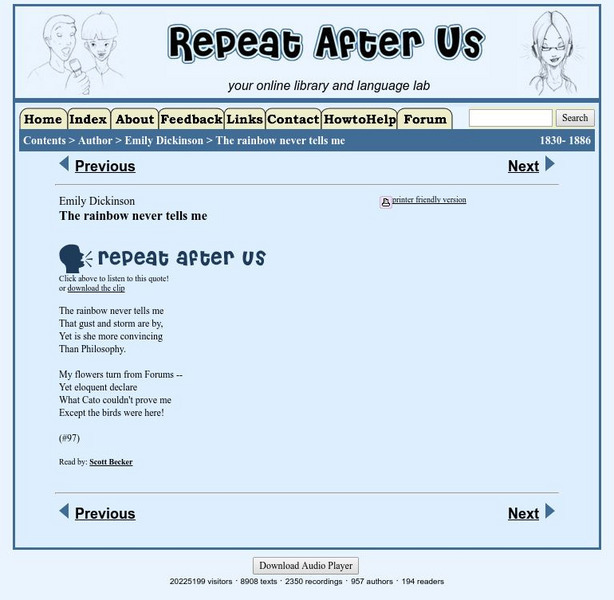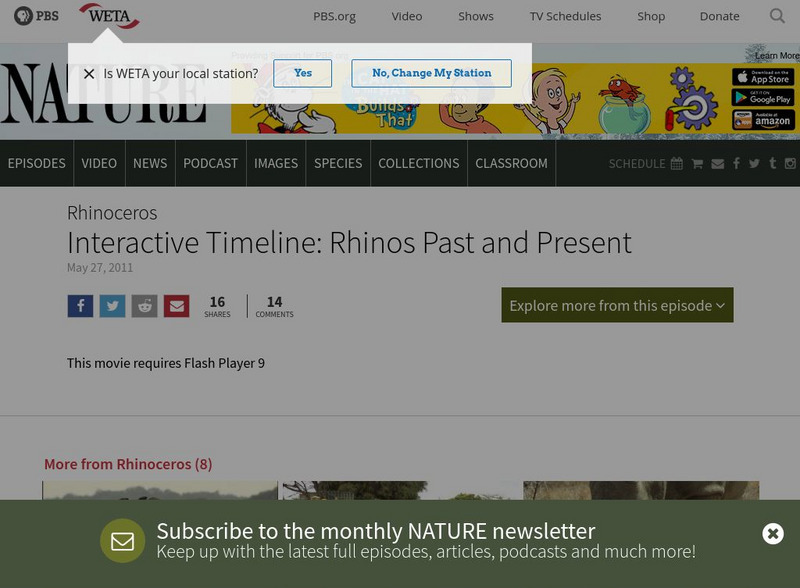Environmental Education for Kids
Eek!: Life as a Wildlife Biologist
This site describes the skills needed for a career in Wildlife Biology. Includes link to a quiz that tests the student's knowledge of Wildlife issues.
Next.cc
Next: Biomimicry
Multiple activities help students gain a better understanding of how nature can be imitated to help solve human problems. Click on the links provided for further exploration.
Science Education Resource Center at Carleton College
Serc: Promoting Environmental Awareness Through Culture and Exploration
For this lesson, the story of Turtle Island is told to the students. Each student will collect leaves and bring one to school, every day, for about a month. Discuss as a class where they come from and why they are all different. Every...
Science Education Resource Center at Carleton College
Serc: Exploring Plants Through Hands on Exploration
In this activity students explore what they know and don't know about plants in a natural setting. They use observation skills to complete a survey of a natural plant area.
Science Education Resource Center at Carleton College
Serc: Observing and Creating Sketches of an Outdoor Environment
Students use their senses to observe nature then sketch a plant and/or animal in their science journals using detail and color. Using these sketches, they will create classroom books which are shared with the class.
Smithsonian Institution
Smithsonian Learning Lab: Students
This wide-ranging collection of resources includes games, informational slideshows and other online activities. Subjects include art, science, history, nature and culture.
Repeat After Us
Repeat After Us: "Nature" Is What We See
A poem from Emily Dickinson, "'Nature' Is What We See", is provided on this site. Students may listen to this poem read aloud by Justen Sumner and can access a printable version of this piece.
Repeat After Us
Repeat After Us: Angels, in the Early Morning
A poem from Emily Dickinson, "Angels, in the Early Morning", is provided on this site. Students may listen to this poem read aloud by Scott Becker and can access a printable version of this piece.
Repeat After Us
Repeat After Us: Have You Got a Brook in Your Litte Heart?
A poem from Emily Dickinson, "Have You Got a Brook in Your Litte Heart?", is provided on this site. Students may listen to this poem read aloud by Bobby Allen and can access a printable version of this piece.
Repeat After Us
Repeat After Us: The Rainbow Never Tells Me
A poem from Emily Dickinson, "The Rainbow Never Tells Me", is provided on this site. Students may listen to this poem read aloud by Scott Becker and can access a printable version of this piece.
TED Talks
Ted: Ted Ed: Detention or Eco Club: Choosing Your Future
Growing up surrounded by gangs in South Central Los Angeles, Juan Martinez wasn't exposed to the great outdoors. One day in high school, he was given the life-changing choice between detention or Eco Club. He chose nature and has since...
PBS
Pbs Kids: Plum Landing: Invaders!
This bustling game is a race to help Plum eliminate introduced or invasive species before they crowd out the native populations.
University of Michigan
American Verse Project: Early Poems of Ralph Waldo Emerson
Read and search for thirty poems by Ralph Waldo Emerson, taken from the book "Early Poems." Includes a brief biography of Emerson.
PBS
Pbs Kids: Nature Changer
As an extension to the PBS Kids' series Plum Landing, students will choose among several animals and simulate their attempt to forage for food to survive.
Other
Shadow Poetry: Henry Wadsworth Longfellow
Henry Wadworth Longfellow (1807-1882 CE) shows his brilliance through his poetry on this site.
Other
John Shaw Photography
A beautiful site full of wildlife photographs. John Shaw is also a lecturer on the subject and a naturalist. He gives seminars on nature phtography and the business aspects of nature photography as well as leading tours around the world.
Other
Bedford Bytes: Mother Nature
This is a selection of three image galleries to be used in conjunction with drawing classes that study patterns in nature.
US Geological Survey
U.s. Geological Survey: Save Animal Tracks as Plaster Casts
Engage students in the outdoors by searching for fresh animal tracks and making molds of them. Then investigate which animal might have been there.
ReadWriteThink
Read Write Think: Examining Transcendentalism
Interactive lesson plan that allows students to view the works and ideas of Ralph Waldo Emerson and Henry David Thoreau through the popular culture of their time. Students use multiple genres to grasp the concepts of Transcendentalism,...
Other
Environmental History: Between Science and Philosophy
Gain a perspective on the origins of the contemporary environmental crisis, where an awareness of the environment came into being.
PBS
Pbs: Nature: Rhinoceros
An interactive timeline describing in both pictures and words the rhinoceroses from 50 million years ago to today. Learn how loss of habitat, poaching, and captivity has changed the rhino population over time.
National Institutes of Health
National Center for Complementary and Integrative Medicine
This site is the home page of a professional organization of physicians and other healthcare providers who specialize in complementary and alternative medicinal practices.
Scientific American
Scientific American Slideshow: No Two Alike: Snowflake Photography
See a variety of beautiful snowflake images demonstrating how each one is different in this slideshow from Scientific American.
Famous Scientists
Famous Scientists: Beatrix Potter
Beatrix Potter may be a familiar name in children's literature, but what a lot do not know is that she is a notable woman of science as well. Find out in this short biography.
